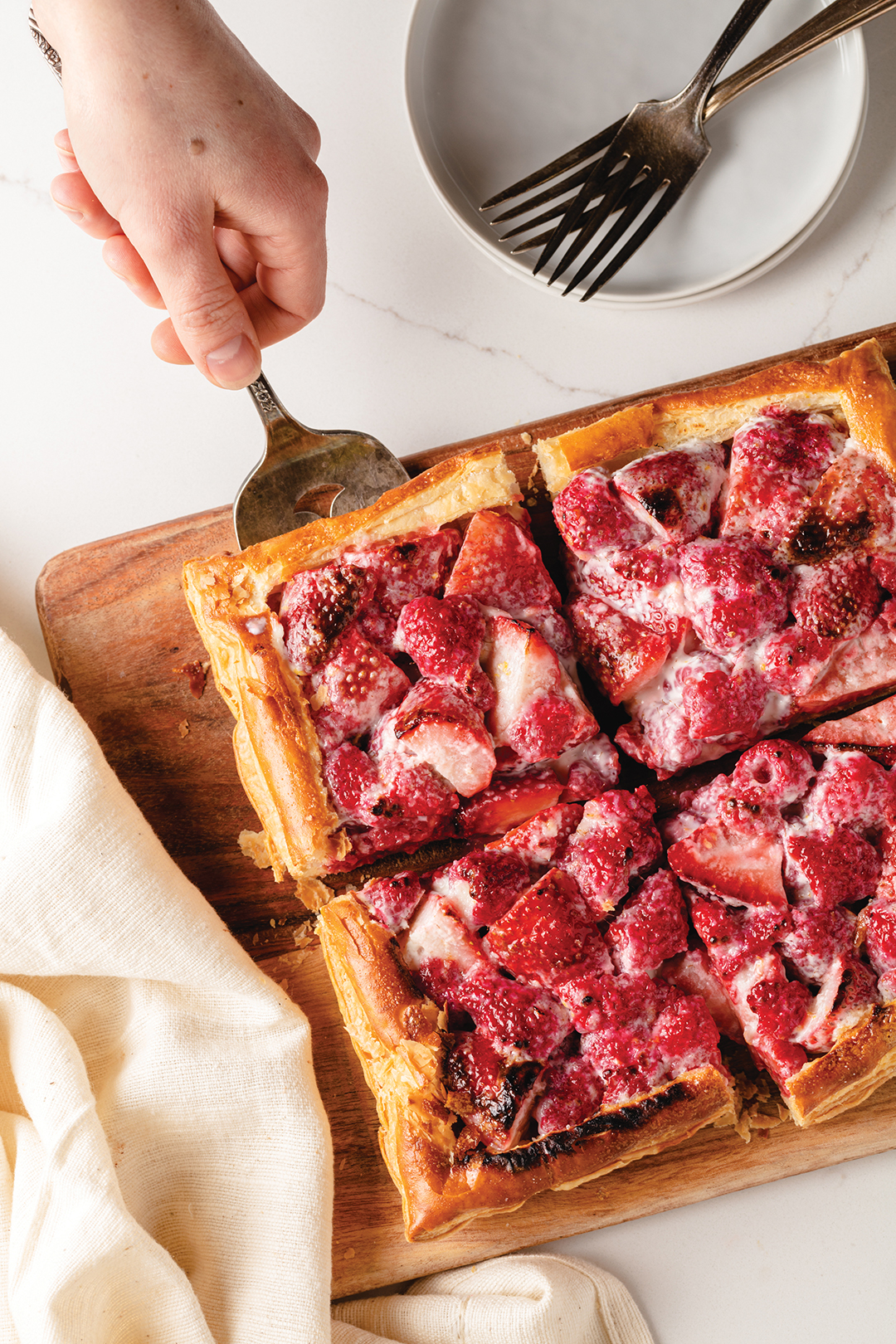
Photo: Tate Carlson
Ben Pratt shares tales of food and family.
Ever wonder what chefs at your favorite restaurants cook at home for the holidays?
Ben Pratt, chef at the acclaimed Ingredients Cafe, and his wife Erin host an annual family Easter dinner with their two kids, aunts, uncles, cousins and grandparents—totaling about 25 people.
Many parts of the dinner come by way of Pratt’s wife Erin’s family, who keep their Polish traditions alive and flourishing.
“At the start of the meal, we have something very traditional—hard-boiled eggs cut in half, with fresh horseradish shavings on top,” Pratt says.
According to Polish tradition, also practiced in other Eastern European countries, horseradish is eaten on Easter because of the effect grated horseradish has on the eyes—it causes crying, even more intensely than onions. The tears are symbolic of those shed by Jesus on the cross. [For the scientifically minded, according to T. Page Owen Ph.D., head of the botany department at Connecticut College, this effect is caused by a compound called allyl thiocyanate. The compound is released when cells of the horseradish roots are ruptured, from chewing or grating for example. The compound irritates the eyes and nose, producing tears and burning sensation in the sinuses.]
“Then we have plotki,” Pratt says. “It’s small, square noodles with butter and sauerkraut, served with Polish sausage or ham on the side.” [Editor’s note: The dish is also known as lazanki according to native Pole Jacek Pomykalski. See Pratt’s recipe below.]
Pratt’s Easter dinner family also includes another classic Polish dish—potato-cheese pierogi (dumplings) topped with sour cream. Pratt takes no shortcuts—he makes both the dough and filling for the pierogi by hand.
While the menu is based on customs from the family’s Polish roots, traditions evolve as the family expands. One new favorite is a dish contributed by an aunt from Sri Lanka—yellow coconut rice cooked with juniper berries, which is as now as much a part of the family celebration as the Polish dishes.
Pratt rounds out the meal with salad and roasted vegetables and of course there’s paska, a sweet Easter yeast bread made many with many eggs, similar to brioche in taste and texture and flecked with raisins.
What wines does Pratt choose for the meal? “For pork,” Pratt says, “I like pinot noir. And I usually have a rosé , too, or a chardonnay, but I’m liking rosé better, it’s more food-friendly.”
His specific recommendations: Domaine Carneros’s pinot noir—made in Napa Valley—and Conundrum Rose, also from California.
Along with the food and wine, a favorite aspect of Easter for Pratt is a spiritual one. “A tradition that I really love is that the day before Easter Sunday, Erin and her mom Mary Jo take all the food that will be part of the Easter dinner and bring it to their church, Holy Cross Catholic Church in Northeast Minneapolis. They take everything—the food, the wine, the candy,” says Pratt. “Everything gets blessed by the priest.”

Photo: Ben Pratt
Celebrate your own traditions and try some of Pratt’s for a delicious family meal.
Looking for authentic Polish sausage and pierogi, candies and more? Try Sikora’s Polish Market & Deli in Northeast Minneapolis and Kramarczuk’s, also in Northeast.
Sikora’s
1625 Washington St. NE
612.789.0907
Kramarczuk’s
215 Hennepin Ave. E
612.379.3018
Chef Ben Pratt’s Recipe for Plotki
SERVINGS: 6 if served as a side dish
TIME: 1 hour and 15 minutes
ACTIVE TIME: 45 minutes
Ingredients
- 1 lb. egg noodles, or other pasta of your choice
- 12 oz. package sauerkraut, drained [Ed note: buy in refrigerated section of supermarket in jar or cellophane package—avoid canned]
- 10 oz. side bacon, pancetta, or regular bacon
- ½ cup butter
- 2 medium onions, chopped
- 1 bay leaf
- ½ tsp. brown sugar, or more to taste
- Salt and freshly ground pepper to taste
Instructions
- In a frying pan, fry the meat over medium heat until the fat is rendered. Remove meat, then chop and set aside. Keep the rendered fat in the frying pan.
- Add the butter into the fat, and over low heat, cook until butter is melted.
- Bring large pot of lightly salted water to boil. Cook noodles according to package directions until al dente (cooked through, but still firm to the tooth.) Do not overcook. Drain and set aside.
- Add the onions to the frying pan. Over medium heat, saute onions until they are soft and translucent.
- Add sauerkraut to frying pan. Over medium heat saute until lightly browned.
- Add the bay leaf, pepper to taste and enough water just to cover the sauerkraut-onion mixture, brown sugar to mellow the tartness of the sauerkraut, and reserved meat. Simmer for 30 minutes.
- Top noodles with sauerkraut-onion mixture. Add salt and additional pepper to taste.
NOTE: The recipe can be made vegetarian by omitting the meat and replacing the rendered fat with an additional ½ cup of butter.






















